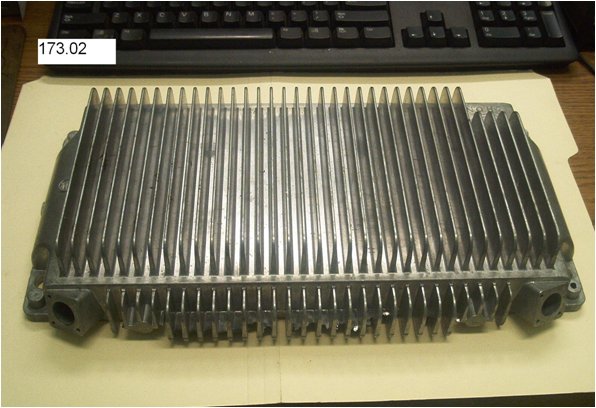Extruded aluminum heatsinks are made by heating aluminum to the point of a semi-solid state. Then this aluminum is pushed (extruded) through an extrusion die. These aluminum forms have the profile of the die it was pushed through, much like …
Continue reading
The Most Commonly Used Die Casting Alloys
The Most Commonly Used Die Casting Alloys. The power and usefulness of die casting really rely on the die casting alloys which were utilized in the procedure. Die casting has been known in the metalworking industry for coming up with the best statistics of mass produced items. These are utilized in different sectors like in customer, industrial and the commercial arena. You can discover aluminum parts such as automobile parts, connectors utilized in houses parts, silk faucet parts and on numerous toys.
Die casting is done when the melted metal is forced under high pressure into molds or dies that are created of reusable steel. This can come up with intricate shapes with outstanding degree of repeatability and precision. Such features will be determined by the categories of die casting alloys utilized to manufacture the products such as die cast speakers.
The most ordinary die casting alloys that are used for this intention include aluminum, zinc, copper, magnesium, lead and tin. There are also particular die casting alloys that are exploited in the procedure that include AA 380, ZAMAK, AA 386, AA 384, zinc aluminum, AA 390 and AZ91D magnesium. If the method will operate magnesium, aluminum, brass and zinc castings, the weight limit must not go beyond 44 lb for magnesium, 70 lb for aluminum, 10 lb for brass and 75 lb for zinc.
These are the key die casting alloys and a general idea on their rewards.
1. Zinc is recognized as the simplest to cast. It has high ductility and can naturally be plated.
2. Magnesium is the simplest to machine.
3. Aluminum has high thermal properties and conductive to electricity.
4. Copper is known for having the uppermost mechanical properties utilized in die cast.
5. Lead and tin have a close range dimensional accuracy and have high density.
Kinetic Die Casting manufactures custom metal parts to their customer. If you would like more information about Kinetic Die Casting, please visit our website:Kinetic Die Casting Company
Die Casting Alloys – Making Use of Zinc-Aluminum Agents
Die Casting Alloys – Making Use of Zinc-Aluminum Agents. The majority of today’s businesses consider that the aluminum die casting alloys are more reasonably priced and efficient to be designed and casted. The zinc-aluminum or ZA partnership succeeds to astonish each and every manufacturer mostly because of the mechanical properties which it holds. Die casting technology has in addition enhanced over the hundreds of years of its sustained use and it has been found out that the ZA alloys make the die casting technology more remarkable.
Usually, the ZA die casting alloys are sturdier, harder, and offers a better kind of creep resistance as compared to the typical zinc alloys obtainable. These characteristics are more than ever essential when the bearing properties are at stake.
The zinc-aluminum alloys are mostly utilized in die casting because of its ability to reduce a great deal of weight from the components. This means that the whole process can be done with all ease and the cost production is much more realistic. On the other hand, the aluminum die casting alloys with a fair amount of Fe are best utilized for the electrical circuits in aluminum die cast boxes. It has substituted the 1350 EC alloy since it has been often held to be the reason for overheating.
Even when surrendered to heat treatment, the ZAMAK alloys don’t create a negative change on its properties. Economically speaking, this type of material can do wonders on the budget management feature of each and every industry. Separate from its known strength, these materials are just so ideal in furnishing the industry with the most excellent final output.
Kinetic Die Casting can manufacture aluminum automobile parts, heat sinks, aerospace parts and much more. If you are looking for aluminum or zinc parts, visit our website Kinetic Die Casting Company
Die Casting Parts RF/EMI Properties
RF/EMI shielding Die Casting Parts. Die Casting Parts RF/EMI Properties.
Aluminum is one of the most abundant “metallic” materials on earth. Aluminum is also one of the most electrically conductive materials. Because aluminum is electrically conductive, it is a natural shield for radio frequency waves.
 Aluminum Heat Sink Die Casting
Aluminum Heat Sink Die Casting
Kinetic Die Casting Company produces many types of aluminum die casting parts. Many times, an aluminum housing or enclosure was made from aluminum because of the natural electrical conductivity of aluminum.
The picture at the top of this newsletter is an electronic enclosure that was die cast in A413 aluminum because of its electronic EMI/RF properties. Perhaps, you should consider aluminum if you are thinking of designing a new electronic enclosure.
Kinetic Die Casting manufactures aluminum die castings creating aluminum die casting boxes, aluminum handle hardware, and aerospace die casting. If you would like to get a quote, please visit our website: Kinetic Die Casting Company
Die Casting Alloys
What is die casting? Die casting is the procedure where melted metal alloy, like aluminum or zinc, is pushed by a piston into a steel die and left under high pressure until the metal hardens. This is how metal parts for automobile die casting, heatsink die casting, and roof tile plates.
There are definite metals that are utilized as die casting alloys. Alloys utilized in die casting are combinations that hold two or more metals. Only metals which do not hold iron are utilized as die casting alloys. Such metals are zinc, aluminum, copper, magnesium, lead, and tin. Zinc is the simplest to die cast among these alloys because it is very sturdy, has the highest ductility has a low melting point, and has a high impact strength. It is the best for creating tiny metal parts. Aluminum is best recognized to be lightweight. What makes it an excellent die cast alloy is that it has high dimensional stability which is crucial in fabricating thin walls for the metal parts. Aluminum also has high corrosion resistance which helps extend the life of the metal parts. Copper has the highest mechanical characteristics among the die casting alloys. It also has high dimensional stability and high corrosion resistance like aluminum, and has high hardness as well. Magnesium is the metal which is the simplest to machine. It has an exceptional strength to weight ratio which is an essential property for building metal parts. Lead and tin are the first metals to be die casted. They are also corrosion resistant and have high densities that cause them to be strong.
These metal alloys have their own properties that make a unique metal part the way it is. Having the right alloy for die casting is necessary for the product to come out right.
Kinetic Die Casting makes great quality aluminum, and Zinc Die Casting If looking for a job or would like a quote please visit our website:Kinetic Die Casting Company

